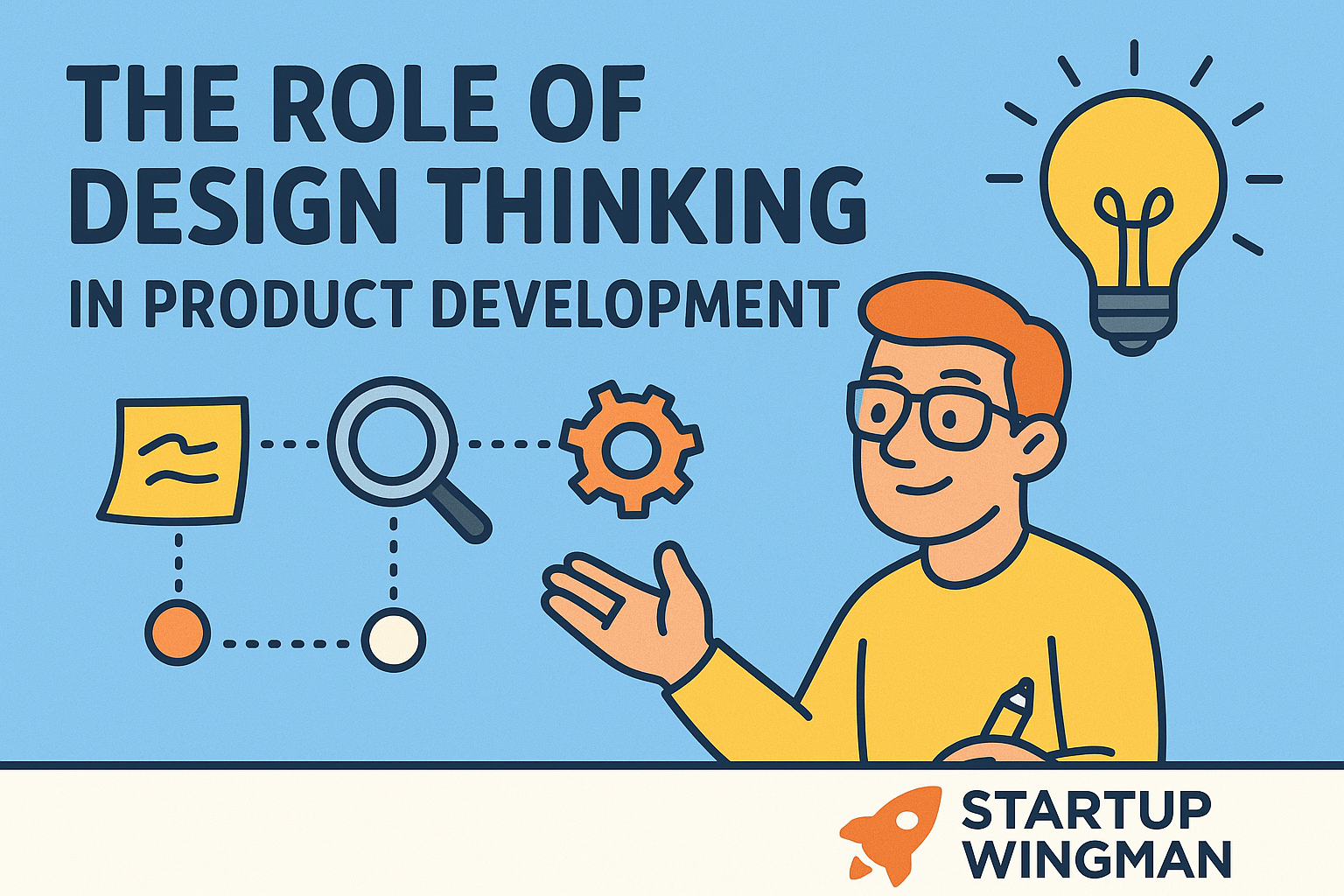01 Apr

Great startups don’t just build products—they solve real problems.
The biggest mistake founders make? Jumping straight to features instead of focusing on user needs. That’s where design thinking comes in—a problem-solving approach that helps startups build products people actually want. Now this shouldn’t be confused with seeking out the best and greatest UX and UI to wow a customer. The other biggest issue I find founders have is delaying their MVP release until things are pixel perfect… one for a future blog.
Here’s how you can apply design thinking to develop better products, faster, without delaying your MVP, in a nice and easy 6 step process:
1. Start with Empathy: Understand Your Users
Before writing a single line of code, you need to deeply understand your users.
✔️ Conduct customer interviews – What problems do they face?
✔️ Observe how they use existing solutions – Where do they struggle?
✔️ Map out their pain points and frustrations. One of the best ways to do this is the Value Proposition Canvas
Skipping this step leads to products nobody needs or features nobody has asked for. Don’t assume—ask.
2. Define the Problem Clearly
Once you understand your users, define the real problem you’re solving.
A weak problem statement: 🚫 “We need an AI-powered productivity tool.”
A strong problem statement: ✔️ “Freelancers struggle with managing multiple projects efficiently and need a simple, automated way to track tasks.”
The clearer the problem, the better the solution. And the interesting thing is this leaves a lot more scope for how you can solve the problem.
3. Ideate: Brainstorm Without Limits
Now, it’s time for creative problem-solving.
✔️ Run a ideation sessions, look at some of the processes out theere for inspiration
✔️ Encourage wild ideas—even the craziest ideas spark innovation. Crazy 8s can be a great example of this from Google Deisgn Sprints
✔️ Focus on user needs over flashy features.
✔️ Think about the commercialisation of your idea. You aren’t a charity after all.
At this stage, quantity > quality. Filter the best ideas later.
4. Prototype Quickly
Don’t spend months building a polished product. Prototype fast and get feedback early.
✅ Low-fidelity prototypes – Paper sketches, wireframes, mockups.
✅ No-code tools – Build quick MVPs using Webflow, Bubble, or Figma.
✅ Test with real users before investing too much time and money. You may only need 5 real users to get the most necessary feedback and see trends.
The goal? Learn fast, fail cheap. I can’t stress enough how much value you can get from the Google Design Sprint for doing this quicklt and effectively.
5. Test, Iterate, Repeat
Once you have a prototype, test it with real users.
✔️ Gather feedback – What were the 3 things you liked? What are the 3 things you’d change? I like to be more open with the questions as often people want to be nice and give positive feedback.
✔️ Identify friction points – Where do they get stuck? More importantly why? What did they expect to happen?
✔️ Improve and refine – Repeat the cycle until you nail the experience.
Successful startups iterate relentlessly. The first version (and technically no version) is never perfect—keep improving.
6. Keep User Feedback at the Core
Even after launch, design thinking never stops.
✔️ Keep talking to users. Beta tests are your friend for testing new features
✔️ Track real-world usage and pain points. Make sure you choose relevant metric and not just vanity ones.
✔️ Adapt based on feedback. Your market and users are ever changing and make sure you have the flexibility to adapt where necessary.
The best products evolve with their users. If you stay rigid, competitors will out-innovate you.
Final Thoughts
Design thinking isn’t a one-off process — it’s a mindset for life. From inception to deployment everything you do should focus on your users and how you can provide them with a solution to their problem and be willing to pay for it (more on that in another blog). The best startups listen, learn, and iterate until they build something truly valuable to their users.
Want to build a product people love? Always start with the problem, not the solution. And if you’re struggling as to do it get in touch!

